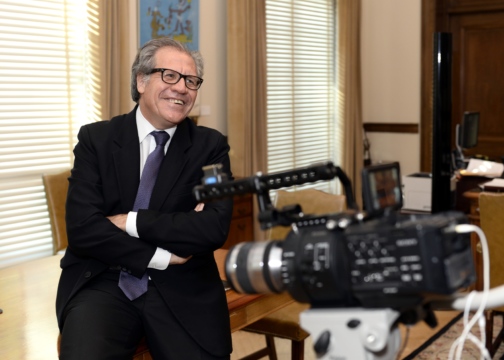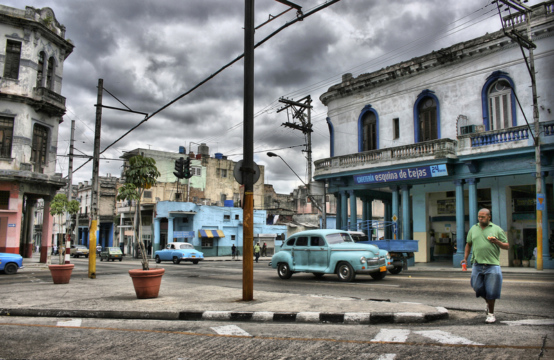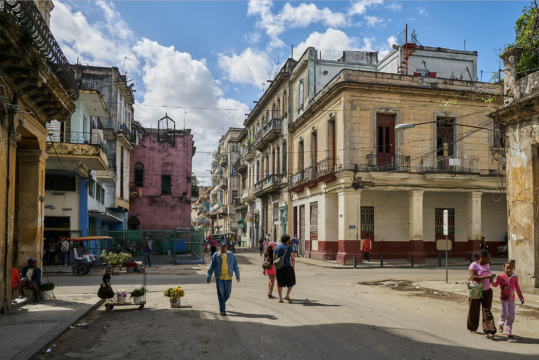
Almagro’s Bold and Risky Cuba Move
By choosing to accept the Oswaldo Payá award in Cuba, the OAS Secretary General has taken a characteristically brave gambit.
As Cuba begins its path towards post-Castroism, drawing comparisons with other transitions within communist regimes is almost inevitable, despite the uniqueness of the island’s situation. While Fidel Castro was a Caribbean Mao of sorts –ruthless, charismatic, egomaniac—some wondered if his brother Raúl would be closer to Deng Xiaoping: the pragmatic reformer that saves the regime from itself by opening up the economy and keeping political control. For a while, as when he welcomed US President Barack Obama to Havana, the Raúl Castro-Deng comparison made some sense. Not anymore.
Raúl came to power in 2006 with a stark diagnosis of the Cuban model’s many shortcomings, but his government fell short of addressing these challenges: monetary duality still generates outrageous distortions, the private sector is tolerated but squeezed by the state, the elite are ossified and unwilling to change, the economy is unproductive and unable to generate enough wealth to guarantee minimum living standards, and the majority of the population still thinks there is more future in Miami than in Havana. Deng, on the contrary, took advantage of the disappearance of the revolutionary idol to launch an ambitious and accelerated reform program that opened China to the world, fully aware that the stability of the regime depended on its ability to generate prosperity.
What Raúl Castro did adopt from Deng was his model of controlled political succession: like the Chinese leader, Castro ceded the presidency to Miguel Díaz-Canel but will remain in control of the Communist Party until 2021, from where he will supervise his successor and keep internal disputes between reformers and conservatives in check. He will also maintain a powerful influence over the armed forces after retirement, as Deng did. Other elements of Chinese inspiration, such as a ten-year limit on presidential terms and the restoration of the office of the Prime Minister to distribute power, will come after the approval of a new constitution, which will be drafted under Castro’s command.
In his farewell speech, Raúl Castro made reference to the collapse of the Soviet Union, an example of a failed transition that plunged Cuba into a brutal crisis of which is still hasn’t fully recovered. Castro warned about “mistakes we cannot make”, alluding to the dangers of attempting to open up the Cuban political system. But Castro’s diagnosis is incomplete: while Gorbachev’s attempts to democratize the Soviet regime led to its unraveling, the USSR had already been doomed by the failure of its mediocre leaders, which for decades did not modernize the economy for fear of instability—a lesson that Deng did not miss.
Ruling out a sudden democratization, Díaz-Canel has two options. The first is to continue Raúl Castro’s path of timid, half-done economic reforms and fear-ridden leadership. By sticking to this conservative way, the new president runs the risk of alienating the population and undermining the bases of the regime, as it happened with the USSR. The other option, Deng’s way, is for Díaz-Canel to consolidate his power within the regime (directly appealing to the people if necessary) to neutralize the conservatives and implement an ambitious reform program that generates opportunities and growth.
Díaz-Canel has an important advantage: nobody, at either side of the Florida strait, expects much of a provincial bureaucrat selected by the Castros for his loyalty and lack of ambition. But the examples of the Soviet Union and China show that although authoritarian regimes always want to keep leadership changes under tight control, any transition implies uncertainty and risks. What’s important is to pick a path.
By choosing to accept the Oswaldo Payá award in Cuba, the OAS Secretary General has taken a characteristically brave gambit.
Desde hace décadas la sociedad cubana demanda un “nuevo pacto social” a través de una renovada Constitución de la República. Aunque se realizaron modificaciones positivas, estas no atendieron reclamos importantes. Cuba Posible y el Programa Cuba de la Universidad Jesús Arboleda presentan el libro “La Cuba que quisimos”, la más completa expresión pública del nuevo pacto social.
Trump nos ha recordado a todos que el gobierno cubano no ha dialogado, no dialoga, ni dialogará con una pistola en la cabeza. Esto, más que un enunciado rimbombante, es un dato histórico luego de 1959. En ese sentido, el camino trazado por Barack Obama con respecto a Cuba, por su clarividencia y capacidad estratégica, sigue siendo el que más convergencia guarda con los intereses de los pueblos cubano y norteamericano.

